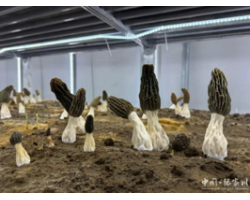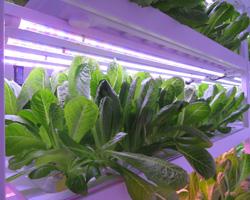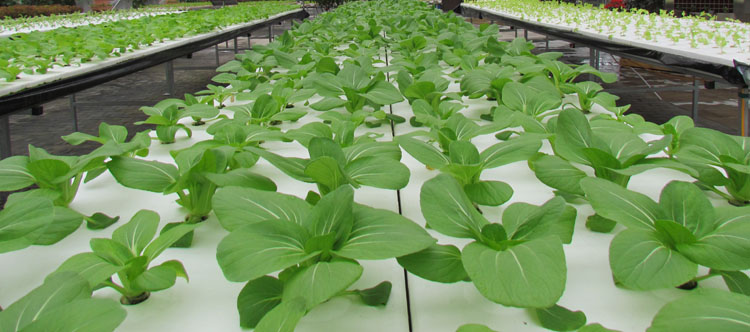Hydroponics: The power of water to grow food
by Valentina Lagomarsino
figures by Rebecca Senft
In the year 600 B.C.E., the climate was arid and dry along the Euphrates River in Western Asia, but there were lush gardens climbing up the walls of the metropolis, Babylon. It is believed that the Hanging Gardens of Babylon were surviving through a pulley-system of water from the river, a technique of agricultural that today is known as hydroponics. More specifically, hydroponics is the method of farming where plants can be grown in nutrient-fortified water, instead of in soil. Given concerns of feeding a growing human population in a changing climate, scientists believe hydroponic technology may be able to mitigate impending food shortages.
The need for innovative agriculture
The United Nations (UN) has projected the global population to reach nearly 10 billion people by 2050, with “roughly 83 million people being added to the world’s population each year until then.” In 2019 alone, an estimated 124 million people faced acute food shortages from climate-related events such as flooding, irregular rains, droughts, and high temperatures. Given that hydroponics can grow food in a controlled environment, with less water and in higher yields, the Food and Agriculture Organization of the United Nations has been implementing hydroponic farming in areas of the world that suffer from food shortages. There are currently ongoing projects to establish large hydroponic farms in Latin American and African countries.
The technology used in hydroponic systems being implemented in developing countries around the world are largely based off hydroponic systems that were designed at NASA. In the late 20thcentury, physicists and biologists got together to figure out a way to grow food in one of the starkest climate known to humans: space. Aerospace plant physiologists at NASA began experimenting with growing plants on the International Space Station using hydroponics technology because it requires less space and less resources than conventional farming. After extensive tests, astronauts ate the first space-grown leafy vegetables in 2015. How did NASA get the idea to use this technology in space? It was from a century of work by scientists who found that plants were surviving–and thriving–while being grown in water.
Invention of modern day hydroponics
In the 19th century, a German botanist at the University of Wurzburg, Julius Sachs, dedicated his career to understanding the essential elements that plants need to survive. By examining differences between plants grown in soil and those grown in water, Sachs found that plants did not need to grow in soil but only needed the nutrients that are derived from microorganisms that live in the soil. In 1860, Sachs published the “nutrient solution” formula for growing plants in water, which set the foundation for modern day hydroponic technology (Figure 1).

In 1937, an American scientist, Dr. W.E. Gericke described how this method of growing plants could be used for agricultural purposes to produce large amounts of crops. Gericke and others demonstrated that the fluid dynamics of water changed the architecture of plant roots, which allowed them to uptake nutrients more efficiently than plants grown in soil, causing them to grow larger in a shorter amount of time. Since then, scientists have optimized the nutrient solution, a total of 13 macronutrients and micronutrients, that are added to water for hydroponic farming (Figure 1).
Hydroponic systems today are very sophisticated; there are systems that will monitor the level of nutrients pH, and temperature of the water, and even the amount of light the plants are receiving. There are three main types of hydroponic systems: a nutrient film technique, an Ebb and Flow System, and a Wick system (Figure 2). A nutrient film hydroponic technique involves plants being grown in a grow tray that it slightly angled and positioned above a reservoir filled with the water-nutrient mix. This allows a thin stream of water to flow across plant roots, allowing the plants to have sufficient water, nutrients and aeration, and then drained back into the reservoir. The nutrient film technique is the most common hydroponic system used today. Plenty and Bowery, two of the largest hydroponic farms in the US, use nutrient film techniques to grow lettuce, spinach and other leafy greens. The Ebb and Flow technique allows plants to be flooded with the nutrient-rich water, and after the plant roots uptake nutrients, water is actively drained back into a reservoir to be reused. Finally, a hydroponic wick system is the simplest of all, as nutrients are passively given to the plant from a wick or piece of string running up to the plant from the water reservoir. In this system, plants are grown in an inert growing medium such as sand, rock, wool or clay balls that help anchor the plant roots. These different systems are interchangeable, but some systems may be better for growing different types of plants.

The advantages of using any of these hydroponic systems are manifold. First, since there is no soil, there is no need to worry about having a plot of land, weeds, pathogens living in dirt, or treating the crops with pesticides. Water is also greatly conserved due to the nutrient reservoir because the same water can be reused over and over. Moreover, as most of these hydroponics farms are indoors, food can be produced all year round and even in the middle of a large city, like New York City. Given all of these benefits, we may begin to see more hydroponic farms sprouting up across the US and around the world because this method of farming holds much promise to revolutionize agriculture by using less water and other resources.
Hydroponics for a sustainable future
Given the need for more sustainable agriculture, there has been a rise in eco-friendly start-up companies around the world that are using hydroponic technology to produce crops on a large scale with a technique known as “Vertical Farming” (Figure 3).
Vertical farms are buildings filled with countless levels of hydroponic systems (or nutrient film style planters), growing different crops in an indoor, controlled temperature environment (Figure 3). The largest vertical farm is being built in Dubai, covering 130,000 square feet of land and aiming to produce 6,000 pounds of food per day, “using 1/2500th the amount of water as an equivalent soil operation”. For a city that imports 85% of their food, this will greatly revolutionize the way the city eats.

While vertical farms hold a lot of promise, they are expensive to implement, technically difficult on a large scale, and the food produced from these systems is generally more expensive than equivalent soil grown food because of the high-energy costs of maintaining the systems. Even so, the Associated Press estimates that food produced by hydroponic technology in 2019 is worth $32 billion USD, and this is projected to grow at a rate of 5% per year until 2025.
While hydroponic technology may never replace conventional farming, it is breaking the paradigm of food production; we may see a new generation of modern farmers building green walls inside their houses or community centers to feed families with fresh produce grown all year round.
Reprinted from: http://sitn.hms.harvard.edu/flash/2019/hydroponics-the-power-of-water-to-grow-food/




